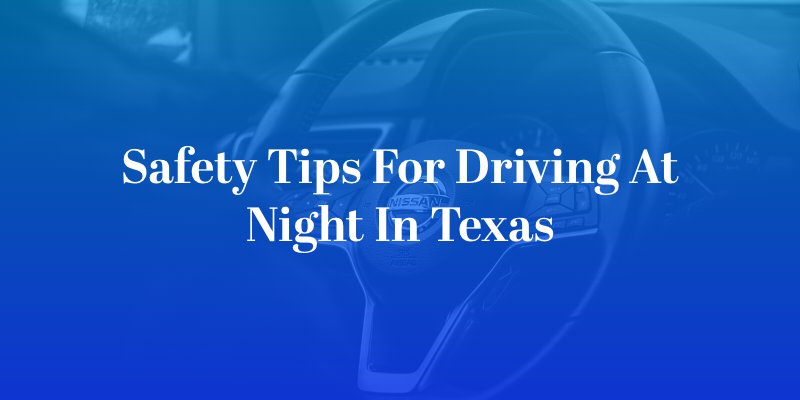
Nighttime presents a variety of accident risks for drivers. Reduced visibility in lower light conditions can make it easy for a driver to miss a hazard, such as a stopped vehicle or crossing pedestrian. If you have to drive at night, use the following tips to decrease your risk of a car accident as much as possible. Remember to seek legal guidance from an experienced car accident attorney ifyou are injured in an accident.
What Are the Dangers of Driving at Night?
In general, driving at night is more hazardous than driving during the day. There are several key dangers associated with nighttime driving, such as:
- Reduced visibility of the road, road signs and road users
- Glare from oncoming headlights
- Changes in depth perception and color recognition
- Inadequate street lighting
- Driver drowsiness or fatigue
- Increased odds of drunk drivers
- More animals crossing the road
According to the National Safety Council, the peak time of day for fatal car accidents is 4:00 p.m. to 7:59 p.m. However, during the spring and summer months, this changes to 8:00 p.m. to 11:59 p.m.
Maintain Your Vehicle
Driving at night can be even riskier if your vehicle is not properly maintained. If your headlights malfunction on a dark road, for instance, this could cause a serious accident. Make sure your headlights are in proper working condition and clean. Check and adjust them to ensure the angle is correct. Clean your windshield, as well, to prevent a glare from occurring due to other drivers’ headlights.
Use Your Headlights Properly
Make use of your high-beam headlights to illuminate particularly dark roads when driving at night, such as back roads or rural roads, but only if there is no oncoming traffic and no vehicles in front of you. Your high beams can make it easier to spot road signs and potential hazards, such as animal activity. If the driver behind you is using high beams that make it difficult to see, use your automatic mirror dimmer or the manual dimmer switch on your rearview mirror.
Adjust Your Interior Lights
Your vehicle’s interior lights can impact nighttime visibility while driving. Try to avoid using your interior lights while driving at night, as your windshield can reflect the light and make it harder to see the road. Set any interior electronics, such as infotainment systems or GPS devices, to night mode or reduce their brightness.
Reduce Your Speed
Always reduce your speed in non-optimal driving conditions, including while driving at night. Drive below the speed limit, if necessary. Driving at a lower speed can make it possible to bring your vehicle to a complete stop to avoid a hazard. You will have more time to respond to a stopped vehicle, crossing pedestrian or dangerous road conditions.
Never Drive While Tired
According to the National Highway Traffic Safety Administration, at least 693 traffic accident deaths in 2022 were from drowsy driving. Never operate a vehicle at night while tired. If you have to drive overnight, get plenty of rest beforehand. If you feel drowsy while driving, pull over and sleep. Caffeine and energy drinks are not substitutes for rest.
Injured in an Auto Accident? An Attorney Can Help
If you get involved in a car accident in Texas and believe that the other driver was drowsy, fatigued or fell asleep behind the wheel, an attorney can help you prove your case. A San Antonio personal injury lawyer can help you establish drowsiness using evidence such as eyewitness statements, driver documents and records, photographs and videos, expert testimony, and crash reconstruction. You can rest and focus on your recovery while your lawyer handles legal processes for you.
